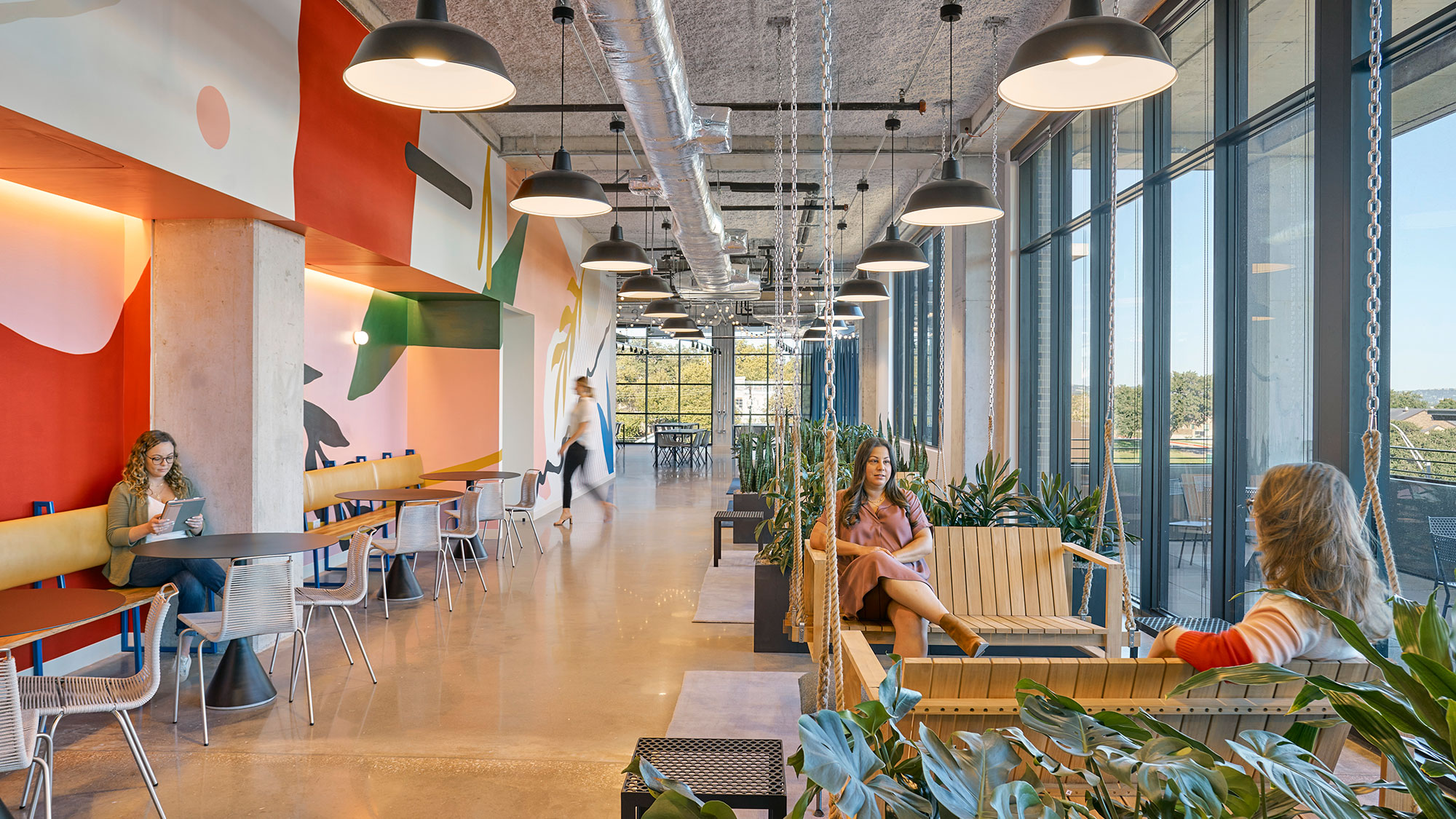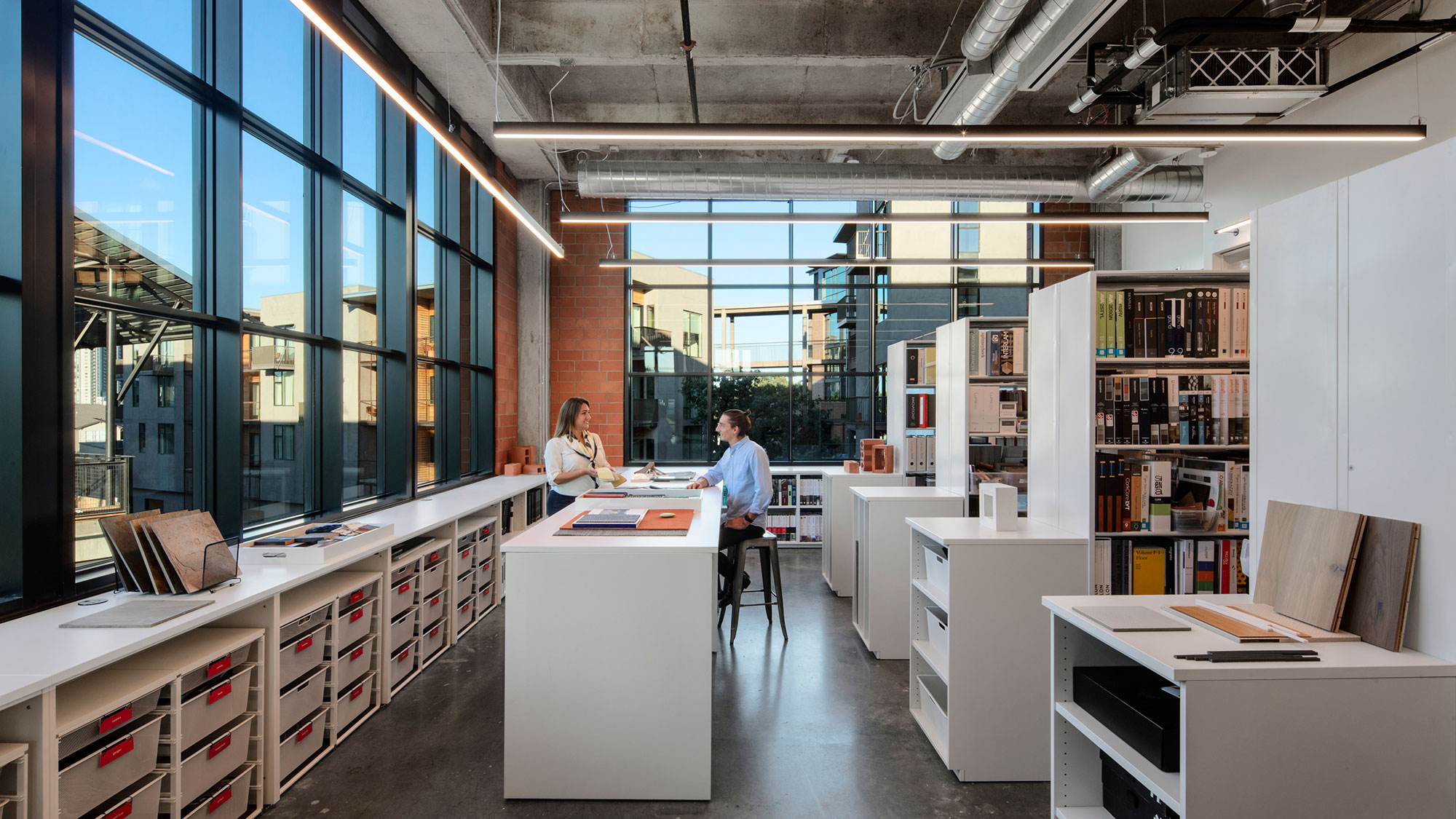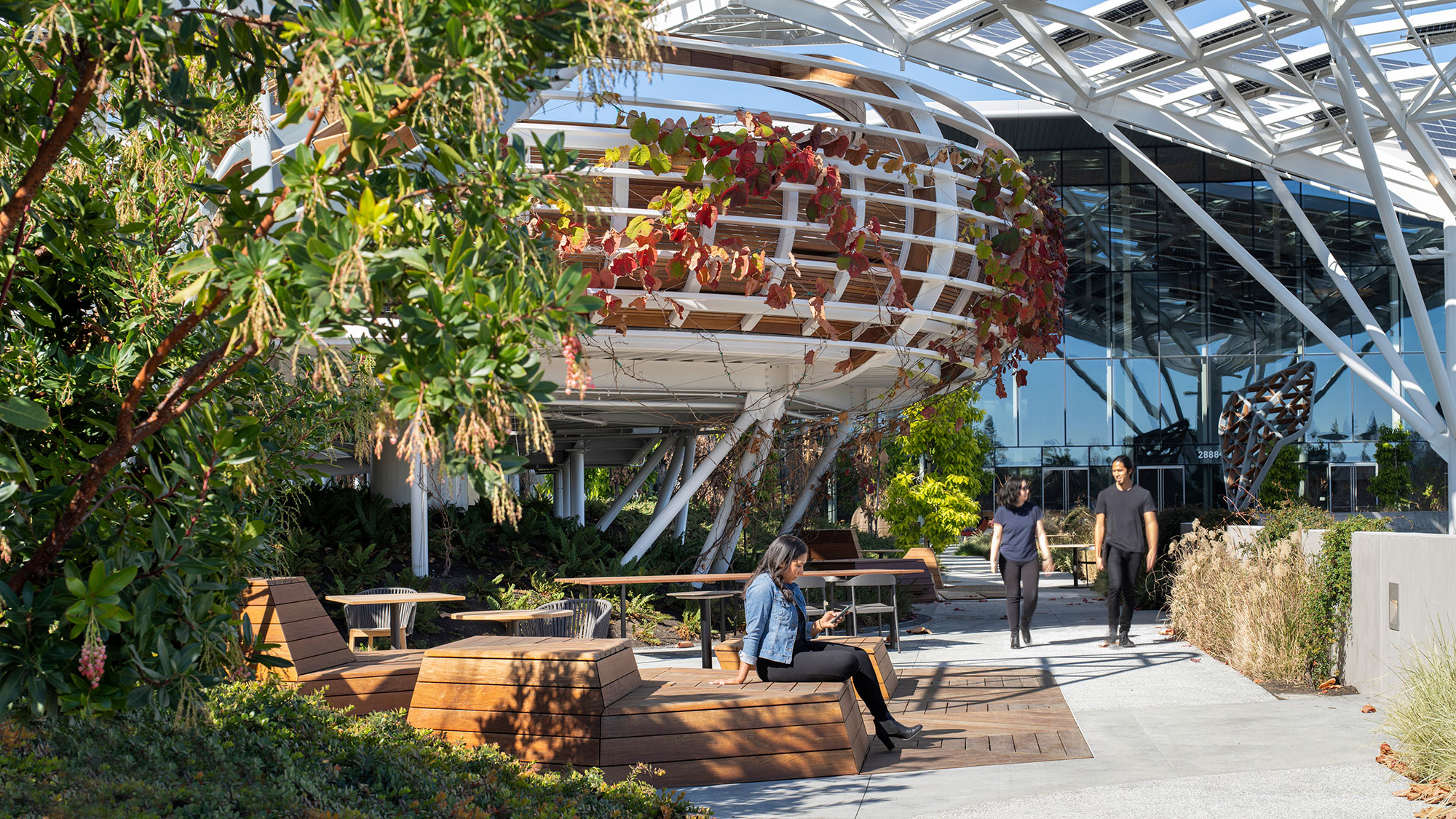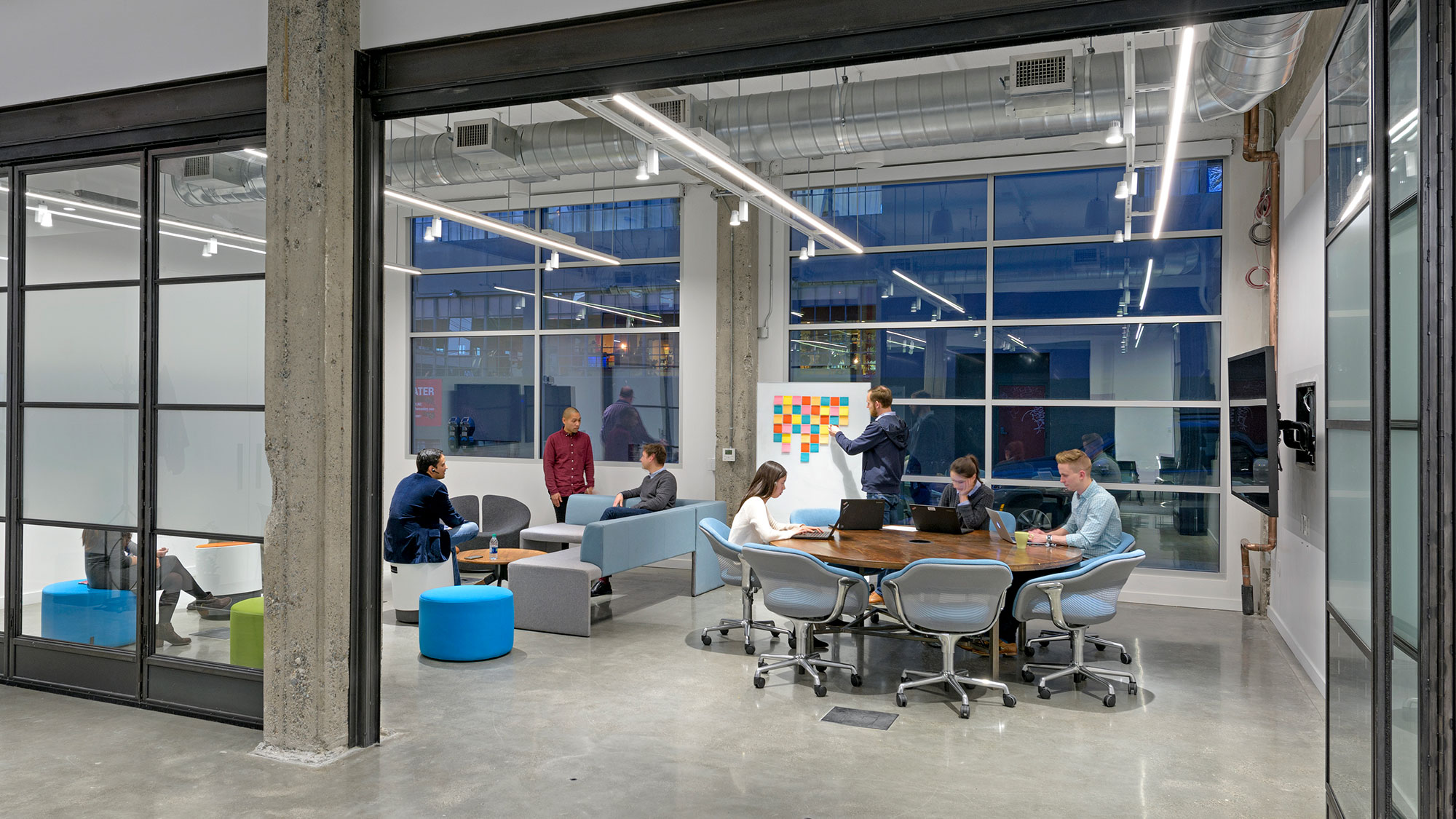The UnOffice: Workplaces for More Than Productivity
June 29, 2023 | By Darshan Shah, David Tao
In the last few years, most high-performing employees have proven they can be perfectly productive, by all quantifiable measures, at home or in third places. It is the less quantifiable, “unproductive time” that employees are struggling to balance when working from home. In response to the migration towards hybrid work, the next evolution of the workplace should foster an expanded, qualitative definition of work. Rather than focusing solely on productivity, successful workplace design embraces unproductive time, or unproductivity.
As we engage with clients and coworkers, we’ve learned that people are scheduling more 1:1s, being more intentional about identifying mentors, and are actively seeking feedback on their work and navigate professional growth. According to Gensler’s 2022 U.S. Workplace Survey, the time spent during a typical workweek learning and socializing has more than doubled from 5% to 12%, from pre-pandemic to Q4 of 2022, respectively. It’s not that our jobs require us to learn more or socialize more; instead, employees are being more intentional about holding time for learning, professional development, and socializing. When people are hyper-focused on making every hour count, these less measurable but vital employee needs stagnate, ultimately leading to reduced measurable outcomes.
“Many elements of [work] — such as exploratory sketching, inspirational tangents, and taking time to be in nature — might be characterized as inefficient uses of company time; however, these measures ultimately lead to productivity. Thresholds should be established organizationally to communicate that employees can practice creativity without ramifications.”
—Gensler, The Culture of Innovation, 2020
While the previous era of workplace evolution was driven by technological advances to improve measurable business outcomes, the next iteration of office design should evolve from creating metric-driven, production powerhouses to designing spaces that foster balance, well-being, and community.
What is productivity… and unproductivity?
In McKinsey’s 2023 report, “Rekindling U.S. Productivity for a New Era,” productivity is defined as “the value of the goods and services produced, divided by the amount of labor, capital, and other resources required for its production.” In other words, productivity is any work that is measurable and directly tied to business outcomes. Whether it’s the delivery driver’s down-to-the-second efficiency or the CEO’s ability to drive profit, productivity distills the complexities of work to a series of hard metrics. It’s no surprise that most humans find productivity metrics to provide a sense of safety, telling us we’re doing a good job or at least doing our job.
Beyond components of labor and capital, there are a multitude of other resources required for productivity. Often over-looked, it’s the qualitative factors that allow a person to be their whole selves (well-being, social connection, culture, and emotional safety) that drive productivity. In common practice, most things unrelated to a specific business goal or measurable outcome are viewed as unproductive.
“[Organizational capital] encompasses everything from training programs to workflows, department and team structures, employee communications, norms, culture, and leadership. When these elements are effective, they can turn a collection of talented individuals into a cohesive team.”
—McKinsey, “Performance Through People: Transforming Human Capital Into Competitive Advantage,” 2023
There’s a perception that being unproductive is time spent not contributing to the bottom line or even professional growth. Casual conversations with your colleagues and mentors, project completion reflections, self-driven learning, and taking a moment for well-being are, by definition, unproductive. These moments are vital to how people and businesses grow, professionally and personally. Unproductivity is innately human. It is unintentional, expansive, and often open-ended.
As we navigate the various modes of RTO (Return to Office), it is evident that some version of hybrid work is here to stay. Working is no longer an on-off binary, and neither is productivity. It is time we design for hybrid work, embracing productivity and unproductivity.
Designing for Unproductivity
The workplace is an evolving tool that is used to support the ever-changing landscape of how and why people work. In this current era of change, and new understanding of people’s values and needs, the workplace is positioned to evolve again.
To harness the potential of unproductivity, the new workplace will need to look beyond past designs of open-work plans, activity-based planning, and productivity tools — instead, it should seek to also support “unproductivity.” This evolution isn’t about providing more ping-pong tables or amenity gimmicks, but actual programs and spaces that lean into the growth and experiences between colleagues.
The last three years have taught us that giving people the space to be human supports retention, engagement, and morale. The workplace should be designed with the tools and spaces to allow productivity to thrive as a byproduct. Only through unproductivity can we create a sense of belonging, encourage innovation, promote well-being, and sustainably grow.
Belonging – Feeling a sense of belonging at work is essential for personal and professional fulfillment. Creating opportunities for employees to connect and feel like they belong is crucial for building a positive workplace culture and improving collaboration effectiveness. Unproductive moments of teamwork, informal conversation, and engaging in experiences with colleagues without the pressure of a measurable outcome help us feel safe and part of something greater. These moments can be manifested in intimate settings, such as cafe seating and nooks for two.

Innovation – Innovation thrives in unproductiveness. By nature of being expansive and explorative, the creative process is most successful when unburdened by the pressure of being measurable. We don’t measure how many ideas are generated or how quickly we can formulate solutions. While the intended outcome may drive productivity, generating new ideas happens outside the metrics. Spaces that allow play with unmeasured outcomes, like makerspaces and creative writing rooms, can greatly support innovation.

Well-being – Unproductively viewed activities, like taking the time to step back, reevaluate our work, and prioritize our mental and physical health, improve our ability to tackle challenges and stay productive over the long term. Under the pressures of work, time for well-being is often considered an “after-hours” activity. Investing in individual well-being is crucial for maintaining growth and achieving better outcomes. Integrating areas such as yoga rooms and parks for individual reprieve throughout the workday can greatly support well-being.

Growth – Most personal growth comes from learning and building strong relationships with our colleagues. Learning requires taking the time to understand and apply new information, which may not be as efficient as simply meeting productivity targets. However, through the learning process, we acquire new perspectives and develop new ways of thinking. By building a network of trusted peers and advocates who support our growth, we learn through constructive feedback and informal recognition that help us feel engaged and connected. These moments can be generated through spaces that allow individuals to reconnect with a company’s mission or goals, such as interactive war rooms and environments with visual transparency to observe teams working together.

Ultimately, company culture will need to adapt to fully embrace unproductivity and allow employees to feel safe in their unproductive nature. Only then will employees be able to experience the full alignment of a company’s mission, vision, and purpose through spaces that allow them to contribute more fully and to be their whole selves.
For media inquiries, email .


